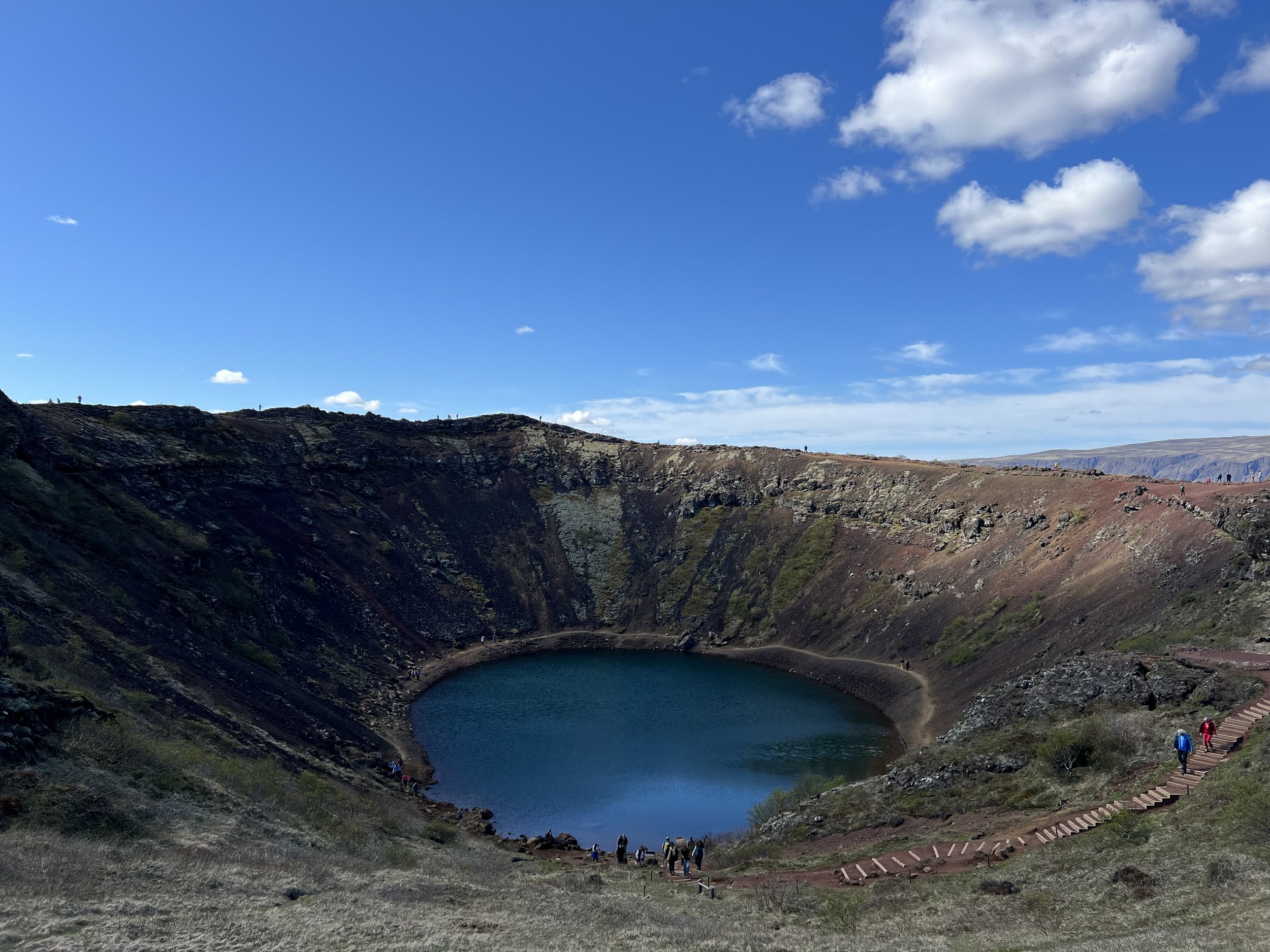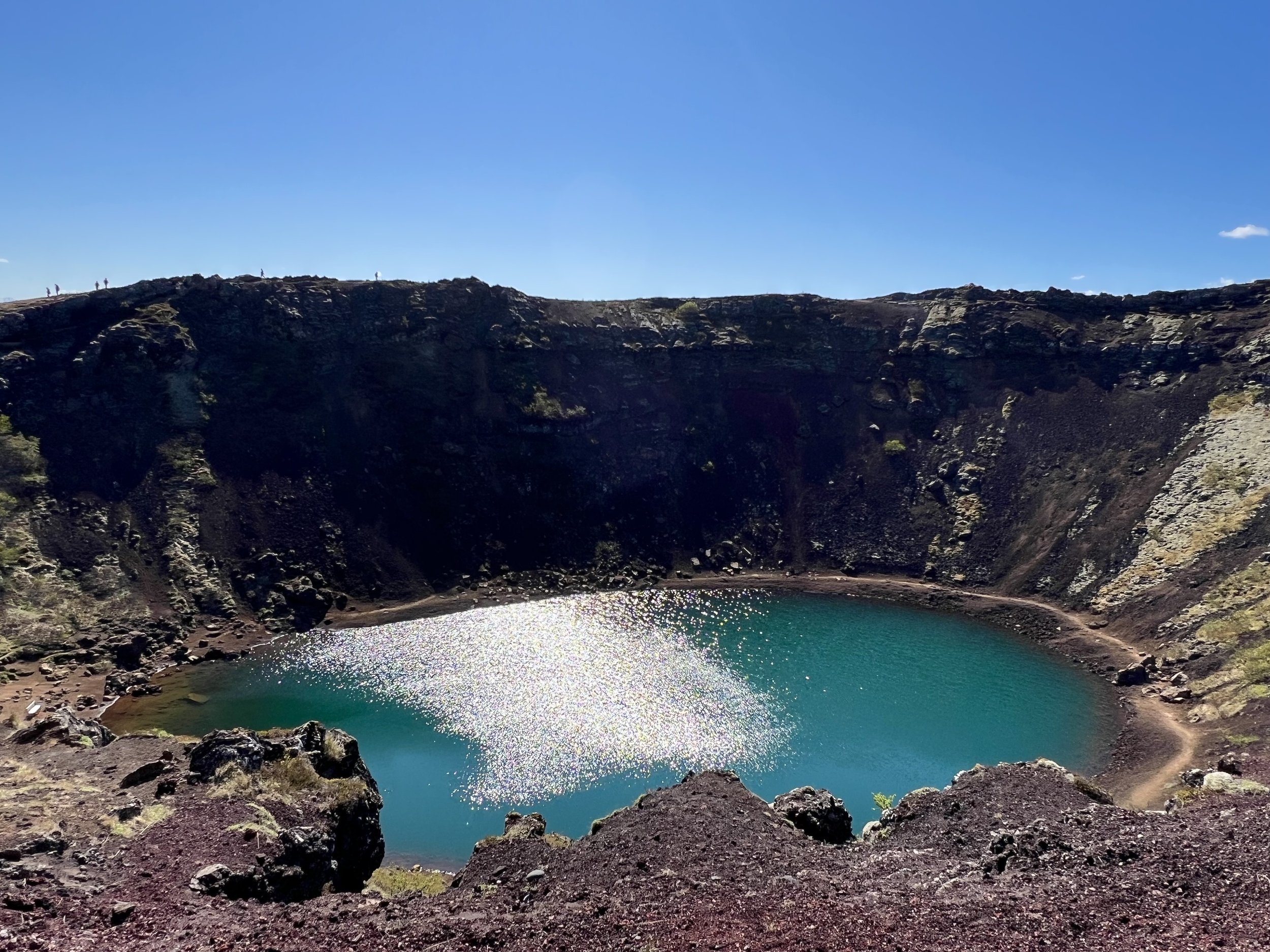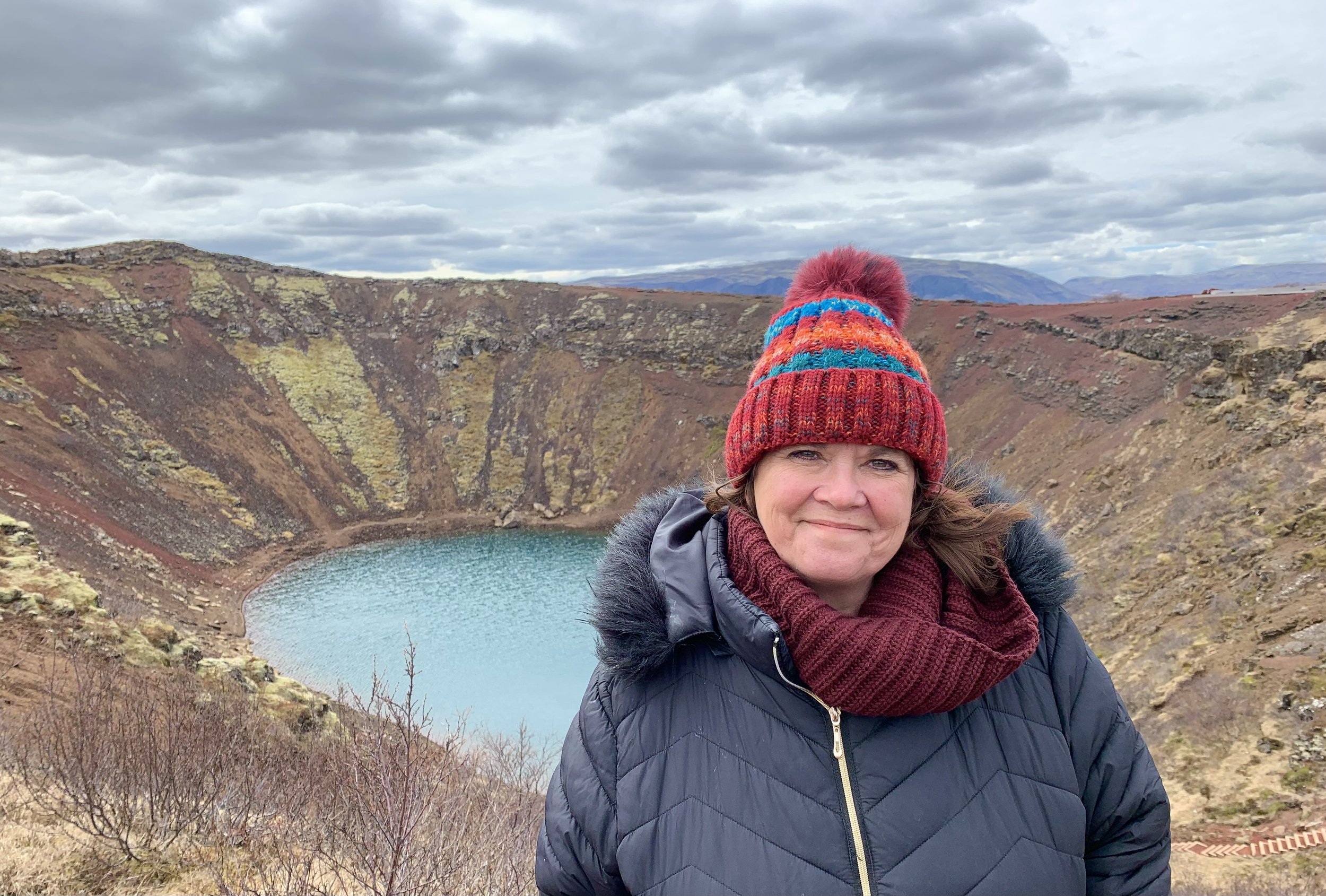Kerið Crater
Looking down at the lake from the rim of Kerið crater
Kerið is a volcanic crater lake located in the Golden Circle area of South Iceland. There are many many crater lakes across Iceland but Kerið is a particularly impressive example. It is set just off the route 35 that leads to Geysir and is very easily accessible. It is also one of the more visually stunning craters we´ve seen since being in Iceland.
Sunshine reflecting off the surface of the lake
The caldera itself is approximately 55m (180 feet) deep, 170m (558 feet) wide, and 270m (886 feet) in circumference, and is made up of red volcanic rock, with the lake it holds being a particularly vivid aquamarine colour that contrasts beautifully with colour of the caldera sides and the green of the vegetation that grows there. The lake itself is shallow and its vivid colour is due to the minerals that come from the soil.
The vivid colour of the lake is quite extraordinary
Kerið is approximately three thousand years old, and so is only half the age of most volcanic calderas found in Iceland (hence the fact that the slopes are red from the (relatively) fresh iron deposits, rather than the more usual volcanic black) and was formed from a cone volcano that erupted and emptied its magma reserve, then collapsed in on itself, creating the crater that remains. At some point, the crater then filled with water, creating the lake which is between seven and fourteen metres deep, depending on the time of year and the amount of rainfall.
The iron deposits in the earth are responsible for the vivid red colour of the crater sides
Kerið Crater Lake is a vibrant natural habitat and is a home to a variety of flora and fauna unique to its volcanic environment. The steep sides of the crater provide a sanctuary for nesting birds, while the aquatic ecosystem of the lake fosters diverse life forms. Vegetation around the crater thrives, adapting to the mineral-rich soil that these types of volcanic craters are known to offer.
Kerið has become a popular tourist stop, with its easy access and the fact that it is so easy to climb as well as its proximity to the other popular stops of the Golden Circle. There is a car park with an entrance booth where visitors have to pay a small entrance fee of 600 ISK. A path has been created from the car park, leading up to and right around the edge of the crater, with wooden steps leading down from the crater edged to the crater lake itself. It is possible to then walk right around the lake, before heading back up the steps to rejoin the path back to the car park.
Looking across the lake from the bottom of the crater
Apart from the natural beauty of this amazing place it is, of course, a place that is rich in Icelandic folklore and legend. Local stories talk of mythical beings called Nykurinn (a type of water kelpie), who are believed to travel by secret tunnels to the crater’s lake.
Icelandic folklore tells us that these tunnels connect Kerið volcanic crater and the nearby Búrfell, a tuff mountain with a water-filled crater. There is an old belief that when the water level in Kerið rises then it decreases in the lake on top of Búrfell - and vice-versa.
According to the legend, a water kelpie (nykur in Icelandic) lives in the lake at Búrfell and travels through the tunnels, spending some time in Kerið crater before returning to its home in Búrfell. The kelpie is described as a grey or brown horse with reversed hooves, fetlocks and ears which tries to lure people into sitting on its back with the intention of dragging them into the abyss! The kelpie will then run towards the lake of either Búrfell or Kerið and jump into the water, drowning the rider. There are many tales of water kelpies across Iceland, and there´s even a waterfall in the east of the country named after them – the Nykurhylsfoss falls – but this is one of the best known stories.
Artists´ impressions of the nykurinn
Whether it is the folklore, the geology or just the natural beauty of the area that appeals, it takes very little time out of the day to make a stop at Kerið and is well worth the time. It really is quite beautiful and a unique geological phenomenon which, when living in Reykjavík, is almost on our doorstep.
Enjoying a quiet day earlier in the year when we had the place almost to ourselves









